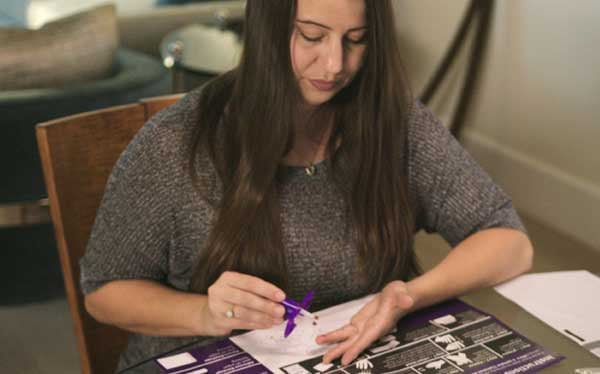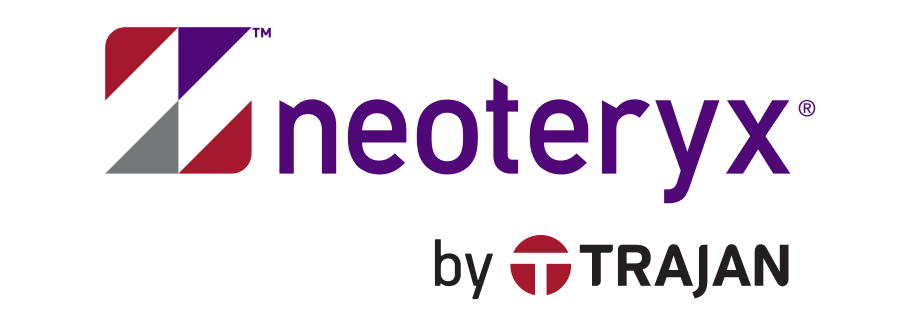Share this
TDM in Europe gets a boost from remote microsampling
by Neoteryx Microsampling on Sep 25, 2017 6:16:00 AM

Kang and Lee define TDM (therapeutic drug monitoring) as a clinical laboratory measurement of a particular drug in a patient’s bloodstream that, with proper medical interpretation and optimized and individualized dosage regimen, enables maintaining the drug’s concentration within a targeted therapeutic range. In Europe, TDM programs are getting a boost from remote specimen collection and microsampling technology.
Adult organ transplant patients at Guy's and St Thomas, an NHS Foundation Trust hospital in the UK, and Rennes University Hospital in France, are using remote specimen collection devices to enable their therapeutic drug monitoring to continue while they remain safe at home. After an organ transplant procedures, patients must typically take drugs such as tacrolimus, to prevent ensure organ function and prevent organ rejection.
Dosing of tacrolimus and creatinine must be monitored closely in patients who have received kidney transplants, for example. Previously, these patients had to travel frequently to the hospital for specimen collection and in-person TDM consultations. Pediatric organ transplant patients at Nottingham Children's Hospital in England also are benefitting from a program that provides remote specimen collection kits for at-home TDM.
Thanks to Mitra® devices based on volumetric absorptive microsampling (VAMS®), patients in the UK and Europe can get specimen collection kits from their hospital delivered by mail. They use the kits to self-collect their own specimen samples at home and send them back to their designated lab via regular mail.
The samples are processed and analyzed to determine if the drug levels in each patient's system are optimal. The care team accesses the lab results through a secure digital system, and follows up with patients via phone or a video call to discuss results and any dosing changes.
A Closer Look at Therapeutic Drugs That Can Be Monitored Remotely
Not every drug needs to be monitored, and certain criteria need to be met for TDM technology to be a sound practice. Drugs that can and should be monitored, include:
- Quality drug assays — To even consider TDM for a specific drug, accurate, precise, sensitive, and specific drug assay procedures must be in place to account for any clinically relevant information, such as dosage regimen, time of sampling, and patient condition.
- Drugs used for treatment of life-threatening conditions — TDM is critical where the lack of therapeutic effect is dangerous for the patient (i.e., bisoprolol, used for treatment of heart failure), the drug itself has a low therapeutic index and is considered unsafe (i.e., paracetamol), or both (i.e., theophylline, used for treatment of respiratory diseases such as chronic obstructive pulmonary disease).
- Drugs that exhibit high intra-specific variability — TDM can track high variability in terms of pharmacokinetics (poor relationship between applied dose and the amount of free drug exerting pharmacological effect) and low intra-specific variability in terms of pharmacodynamics (good relationship between the serum drug concentration (SDC) and pharmacological effect).
How Technological Advancements Help Patients in TDM Programs
Just a quick look at the TDM criteria reveals that the sensitive populations that benefit the most from TDM – newborns, the elderly, chronically ill, or terminally ill patients, individuals with disabling conditions – are likely to be the most strained by traditional TDM requirements, especially the frequent clinic visits and invasive blood draws that include sampling of large volumes of blood.
These are the very patients who can benefit most from remote technologies and tools that allow them to use minimally invasive self-sampling while safe at home to avoid unnecessary travel and exposure to contagions.
Microsampling Advances Pharmacokinetics While Keeping Patients Safe
Technological advancements in all medical fields, alternative sampling matrices, such as dried microsamples, allow for many applications of remote TDM, providing the most vulnerable patients with a host of benefits, including:
- Home-based TDM removes the strain of frequent visits to a medical facility
- Robust, non-invasive procedures are suitable for self-sampling while providing relevant clinical data from capillary blood sampling
- Less invasive, convenient, straightforward sampling promotes patient compliance, further aiding in therapy optimization and individualization
Off-site TDM involving remote sampling also facilitates pharmacokinetic studies in critical patient populations for a range of drugs that currently lack this data. Remote specimen collection and microsampling can accelerate this effort. With a better understanding of a drug’s pharmacokinetics in particular populations, along with procedures for cytochrome P450 phenotyping, a better understanding of dose-effect relationship will reduce the need for TDM, leading to increased patient care with less strain on the patients themselves.
Share this
- Microsampling (206)
- Research, Remote Research (119)
- Venipuncture Alternative (105)
- Clinical Trials, Clinical Research (83)
- Mitra® Device (73)
- Therapeutic Drug Monitoring, TDM (51)
- Dried Blood Spot, DBS (39)
- Biomonitoring, Health, Wellness (30)
- Infectious Disease, Vaccines, COVID-19 (24)
- Blood Microsampling, Serology (23)
- Omics, Multi-Omics (21)
- Decentralized Clinical Trial (DCT) (20)
- Specimen Collection (18)
- Toxicology, Doping, Drug/Alcohol Monitoring, PEth (17)
- Skin Microsampling, Microbiopsy (14)
- hemaPEN® Device (13)
- Preclinical Research, Animal Studies (12)
- Pharmaceuticals, Drug Development (9)
- Harpera Device (7)
- Industry News, Microsampling News (5)
- Antibodies, MAbs (3)
- Company Press Release, Product Press Release (3)
- Environmental Toxins, Exposures (1)
- July 2025 (1)
- May 2025 (1)
- April 2025 (2)
- December 2024 (2)
- November 2024 (1)
- October 2024 (3)
- September 2024 (1)
- June 2024 (1)
- May 2024 (1)
- April 2024 (4)
- March 2024 (1)
- February 2024 (2)
- January 2024 (4)
- December 2023 (3)
- November 2023 (3)
- October 2023 (3)
- September 2023 (3)
- July 2023 (3)
- June 2023 (2)
- April 2023 (2)
- March 2023 (2)
- February 2023 (2)
- January 2023 (3)
- December 2022 (2)
- November 2022 (3)
- October 2022 (4)
- September 2022 (3)
- August 2022 (5)
- July 2022 (2)
- June 2022 (2)
- May 2022 (4)
- April 2022 (3)
- March 2022 (3)
- February 2022 (4)
- January 2022 (5)
- December 2021 (3)
- November 2021 (5)
- October 2021 (3)
- September 2021 (3)
- August 2021 (4)
- July 2021 (4)
- June 2021 (4)
- May 2021 (4)
- April 2021 (3)
- March 2021 (5)
- February 2021 (4)
- January 2021 (4)
- December 2020 (3)
- November 2020 (5)
- October 2020 (4)
- September 2020 (3)
- August 2020 (3)
- July 2020 (6)
- June 2020 (4)
- May 2020 (4)
- April 2020 (3)
- March 2020 (6)
- February 2020 (3)
- January 2020 (4)
- December 2019 (5)
- November 2019 (4)
- October 2019 (2)
- September 2019 (4)
- August 2019 (4)
- July 2019 (3)
- June 2019 (7)
- May 2019 (6)
- April 2019 (5)
- March 2019 (6)
- February 2019 (5)
- January 2019 (8)
- December 2018 (3)
- November 2018 (4)
- October 2018 (7)
- September 2018 (6)
- August 2018 (5)
- July 2018 (8)
- June 2018 (6)
- May 2018 (5)
- April 2018 (6)
- March 2018 (4)
- February 2018 (6)
- January 2018 (4)
- December 2017 (2)
- November 2017 (3)
- October 2017 (2)
- September 2017 (4)
- August 2017 (2)
- July 2017 (4)
- June 2017 (5)
- May 2017 (6)
- April 2017 (6)
- March 2017 (5)
- February 2017 (4)
- January 2017 (1)
- July 2016 (3)
- May 2016 (1)
- April 2016 (2)



No Comments Yet
Let us know what you think